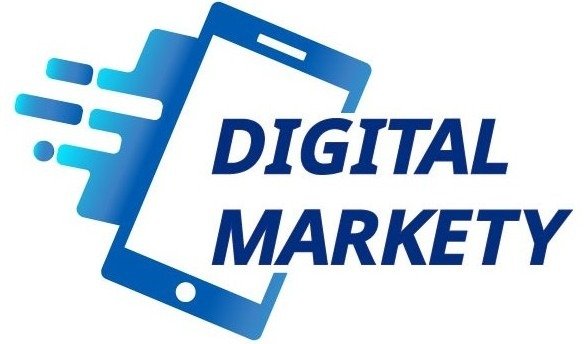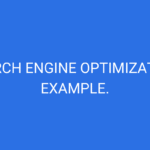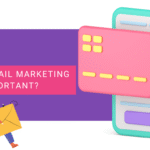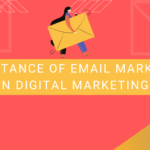
What is email marketing?
Introduction to Email Marketing
Email marketing is a strategic approach that involves sending targeted messages to a group of individuals through electronic mail. It has become an integral component of digital marketing, enabling businesses to communicate effectively with their audiences, nurture relationships, and drive conversions. The significance of email marketing in the modern digital landscape cannot be overstated—it serves as a direct line of communication between brands and customers, allowing for personalized experiences that can enhance engagement and loyalty.
Table Of Content
The origins of email marketing can be traced back to the early days of the internet, where simple messages were sent to inform subscribers about company updates or promotions. As technology advanced, so did email marketing practices. The transformation from basic newsletters to intricate automated campaigns mirrors the broader evolution of digital marketing. With the introduction of more sophisticated tools and analytics, marketers have been able to segment their audiences, tailor their messaging, and optimize campaigns to maximize effectiveness.
Ultimately, the evolution of email marketing reflects the ongoing need for businesses to find effective means of communicating with their target audience. It continues to thrive in a landscape cluttered with options, proving itself as a vital tool for customer relationship management and brand development. Understanding its history and significance is crucial for anyone looking to leverage this powerful marketing tool effectively.
Types of Email Marketing
Email marketing is a versatile and dynamic tool that businesses utilize to reach their audience effectively. Within this domain, various types cater to different objectives, namely newsletters, promotional emails, transactional emails, and automated drip campaigns.
Newsletters serve as a vital communication channel, keeping subscribers informed about company news, industry insights, and valuable content. They often adhere to a consistent format, comprising a mix of informational articles, updates, and calls to action. Best practices for newsletters include maintaining a clear and engaging design, ensuring mobile compatibility, and providing valuable content that meets the interests of the audience.
Promotional emails, on the other hand, are solely focused on driving sales and conversions. These emails typically include special offers, discounts, or new product announcements. Effectiveness revolves around crafting compelling subject lines, utilizing eye-catching visuals, and creating urgency through time-sensitive offers. Segmentation can dramatically improve the impact of promotional emails by targeting specific segments of a customer base, thereby addressing their unique needs.
Transactional emails confirm specific actions taken by users, such as a purchase receipt or an account registration acknowledgment. While their primary function is to deliver crucial information, these emails can also be utilized for upselling or cross-selling opportunities. Their format is usually straightforward and informative, providing necessary details without being overly promotional.
Finally, automated drip campaigns are a series of pre-scheduled emails that guide subscribers through a defined journey, often aimed at nurturing leads or retaining customers. These campaigns employ targeted messaging based on user behaviors or interactions, thereby enhancing engagement over time. Effective drip campaigns require thoughtful planning, clear objectives, and regular analysis to optimize performance.
Benefits of Email Marketing
Email marketing has emerged as a vital tool for businesses seeking to engage with their target audiences effectively and efficiently. One of the most significant benefits of email marketing is its cost-effectiveness. According to a study by the Data and Marketing Association (DMA), email marketing generates an average return on investment (ROI) of $42 for every dollar spent, making it one of the most lucrative marketing channels available.
Another advantage of email marketing is its capacity for direct engagement with target audiences. Through segmentation and targeted campaigns, businesses can tailor their messages based on consumer preferences and behaviors. This personalized approach not only enhances the customer experience but also increases the likelihood of conversion. A report from Experian highlights that personalized emails can lead to 29% higher open rates and 41% higher click-through rates compared to non-personalized messages.
Furthermore, email marketing fosters improved engagement rates. With the global average open rate for emails hovering around 20%, companies have the opportunity to capture attention with relevant and valuable content. Well-crafted subject lines and strategic timing can compel recipients to interact with the emails, ultimately driving traffic to websites and boosting sales.
Moreover, email marketing provides measurable results, allowing marketers to track performance metrics such as open rates, click-through rates, and conversions. This data enables businesses to refine their email strategies over time, optimizing campaigns based on what resonates with their audience. Tools like A/B testing permit marketers to experiment with different elements of their campaigns, ensuring continual improvement.
In summary, the benefits of email marketing are manifold. From its cost-effectiveness and ability to reach target audiences directly, to personalized messaging, improved engagement rates, and measurable results, email marketing remains an essential component of a successful marketing strategy for organizations aiming to elevate their customer interactions and business outcomes.
Building an Email List
Creating a robust email list is foundational to a successful email marketing strategy. An effective email list not only increases the reach of your campaigns but also enhances engagement with your audience. To build a quality email list, ethical practices should be prioritized to ensure compliance with regulations and foster trust among subscribers.
One of the best practices for collecting email addresses is utilizing lead magnets. Lead magnets are enticing incentives offered to potential subscribers in exchange for their email information. Examples include free e-books, exclusive discounts, webinars, or valuable content that addresses specific pain points. By providing meaningful resources, you increase the likelihood of subscribers opting into your list. Furthermore, showcasing testimonials or success stories connected to the lead magnet can effectively demonstrate its value.
Segmentation is another crucial aspect of building an email list. By categorizing contacts based on demographics, behavior, or engagement levels, marketers can tailor messages to better align with the interests of different audience segments. Customized content significantly enhances open and click-through rates, ultimately improving campaign performance. For instance, rather than sending a generic newsletter, email marketing professionals might send targeted promotions to specific groups, thus fostering stronger connections with subscribers.
Maintaining list hygiene is paramount to ensuring your email marketing efforts remain effective. Regularly cleaning your list by removing inactive subscribers can help minimize the risk of being flagged as spam, which can adversely affect deliverability rates. Additionally, prompt responses to unsubscribe requests should be honored to retain a positive brand image. By prioritizing list hygiene, organizations not only improve engagement rates but also ensure their messaging reaches genuine and interested audiences.
Creating Compelling Email Content
Crafting effective email content is pivotal in ensuring that your email marketing campaigns achieve their intended goals. One of the foundational elements of compelling email marketing is the subject line, which serves as the first point of engagement. Eye-catching subject lines should not only be concise but also convey a clear value proposition to the recipient. Utilizing actionable language and personalization can significantly increase open rates, as recipients are more likely to engage with emails that appear relevant and tailored to their interests.
After the subject line, the body of the email must capture and retain the reader’s attention. Effective email copywriting focuses on clear and persuasive messaging. Start by addressing the recipient’s pain points and presenting a solution. Using a conversational tone can foster a connection with your audience, making them feel more involved in the content. Additionally, incorporating storytelling techniques can enhance relatability, thereby increasing the likelihood of continued engagement.
The design of the email should not be overlooked, as it plays a crucial role in enhancing readability and user experience. Visually appealing templates that align with your brand identity can help create a consistent impression. It is advisable to use a responsive design that optimizes viewing on various devices, ensuring your email appears professional across all platforms.
Finally, incorporating clear calls to action (CTAs) is essential for guiding recipients toward your desired outcome. Effective CTAs should stand out visually and be accompanied by concise, action-oriented language. A well-placed CTA can significantly enhance engagement rates, leading to improved conversion outcomes. By aligning your email content with these best practices, your marketing efforts are more likely to resonate with your audience and achieve measurable success.
Email Marketing Tools and Software
Email marketing has become an indispensable component of digital marketing strategies, prompting the development of various tools and software that streamline the process of creating, sending, and analyzing campaigns. Among the leading platforms in the market, Mailchimp, Constant Contact, and Sendinblue stand out for their user-friendly interfaces and robust features aimed at both novice and experienced marketers.
When selecting an email marketing tool, it is essential to consider automation capabilities. Today’s best platforms offer advanced automation features that allow marketers to send targeted emails based on user interactions, thus enhancing engagement rates. Trigger-based campaigns can significantly improve conversion rates by delivering the right message at the right time, ultimately fostering stronger relationships with subscribers.
Analytics and reporting features are another crucial aspect of email marketing tools. A comprehensive analytics dashboard offers insights into open rates, click-through rates, and overall campaign performance, enabling marketers to make data-driven decisions. For example, platforms like HubSpot and ActiveCampaign provide in-depth reports that help users understand audience behavior and optimize future campaigns for better results.
A/B testing capabilities are also vital in evaluating the effectiveness of various email components, such as subject lines, layouts, and calls to action. This iterative process can help marketers refine their approaches, leading to improved user engagement over time. Additionally, ensuring compliance with email regulations, such as the General Data Protection Regulation (GDPR) and the CAN-SPAM Act, is paramount for maintaining recipient trust and avoiding penalties.
By utilizing these key features in email marketing tools, marketers can create powerful campaigns that resonate with their target audience, leading to increased brand awareness, customer loyalty, and ultimately, sales growth.
Metrics to Measure Email Marketing Success
Effective email marketing campaigns require continuous assessment to ensure they meet their objectives. Marketers should focus on key performance indicators (KPIs) to evaluate the success of their efforts. Among the most crucial metrics are open rates, click-through rates, conversion rates, and return on investment (ROI).
Open rates refer to the percentage of recipients who open a specific email. This metric helps gauge the effectiveness of subject lines and overall messaging. A low open rate may indicate that improvements are needed in the content approach or targeting strategy. Tracking this KPI over time allows marketers to identify trends and modify their campaigns accordingly, ensuring greater engagement with future emails.
Click-through rates (CTR) measure the frequency with which recipients click on links within the email. This metric is vital for understanding how well the content resonates with the audience. A higher CTR indicates that the email effectively prompts action, while a lower rate may signal the need for adjustments in copy or the calls to action within the email. By analyzing CTR, marketers can refine their strategies to better capture the interest of their target audience.
Conversion rates indicate the percentage of recipients who complete a desired action after clicking through from an email, such as making a purchase or signing up for a newsletter. This metric is critical, as it directly measures the effectiveness of the email in driving results. Analyzing conversion rates provides insights into the alignment of the email’s content and the landing page experience. Similarly, tracking ROI allows marketers to assess the profitability of their email campaigns by comparing revenue generated against the costs incurred.
In conclusion, by monitoring these essential metrics, marketers can gain valuable insights into their email campaigns, enabling them to make data-driven adjustments to improve overall effectiveness and achieve their marketing goals.
Email Marketing Best Practices
Email marketing continues to be a fundamental strategy for businesses seeking to engage customers and increase conversions. To maximize the effectiveness of email campaigns, several best practices should be observed. First, establishing the appropriate frequency of emails is crucial. Sending too many emails can overwhelm subscribers, leading to higher unsubscribe rates. Conversely, sending emails too infrequently may cause potential customers to forget about your brand. A strategic approach typically suggests a balanced frequency, such as weekly or bi-weekly emails, which keeps the brand top-of-mind without risk of irritation.
Personalization is another key aspect of effective email marketing. With advancements in data analytics, marketers can tailor content to align with individual preferences and behaviors. Utilizing the recipient’s name, segmenting lists based on demographics or past purchases, and recommending products based on browsing history can enhance engagement significantly. Personalization not only fosters a sense of connection but can also drive higher open and click-through rates.
Compliance with legal regulations such as GDPR and CAN-SPAM is essential in building trust and maintaining a good reputation. Marketers must ensure that consent is obtained before sending marketing emails and provide clear options for subscribers to opt out. Moreover, including an easy-to-find unsubscribe link in every email is not only a requirement but also promotes transparency.
Maintaining brand consistency across all emails strengthens recognition and trust among subscribers. This encompasses visual elements like logo placement, colors, and overall design, as well as tone of voice in the copy. Consistency is vital for reinforcing brand identity and ensuring that recipients can easily identify emails from your company.
Finally, optimizing emails for mobile devices is non-negotiable in today’s digital landscape. With a significant percentage of users accessing emails on mobile phones, ensuring that emails are responsive and easily readable on various screen sizes is imperative.
The Future of Email Marketing
As digital landscapes continue to evolve, the future of email marketing is being shaped by several emerging trends and technological advancements. One of the most significant developments is the rise of artificial intelligence (AI) in the field of email personalization. Modern email marketing strategies are increasingly leveraging AI to analyze customer data and behavior, which leads to highly tailored content that resonates with individual recipients. By utilizing AI algorithms, marketers can optimize send times, suggest personalized product recommendations, and even curate dynamic content that adapts based on user interactions. This level of personalization not only improves open and click-through rates but also fosters stronger relationships between brands and consumers.
Another noteworthy trend is the integration of social media into email marketing campaigns. As users engage across multiple platforms, seamless integration allows brands to extend their reach and consolidate their messaging. By incorporating social sharing buttons and links directly within emails, marketers can encourage their audience to share content and promotions, thus amplifying their presence across social networks. Such cross-channel strategies are particularly effective in driving user engagement and fostering community involvement, two critical components for successful modern marketing.
Interactive email content is also poised to revolutionize how brands connect with their audiences. Features such as embedded videos, polls, and interactive quizzes are becoming more prevalent, enhancing user experiences and allowing for real-time feedback. This kind of engagement can significantly boost user interest and retention, making emails feel less like promotional content and more like a two-way conversation. As technology progresses, marketers are likely to continue exploring innovative ways to create engaging and interactive email experiences that keep consumers captivated.






I’ve been in marketing for 5 years and still learned something here.